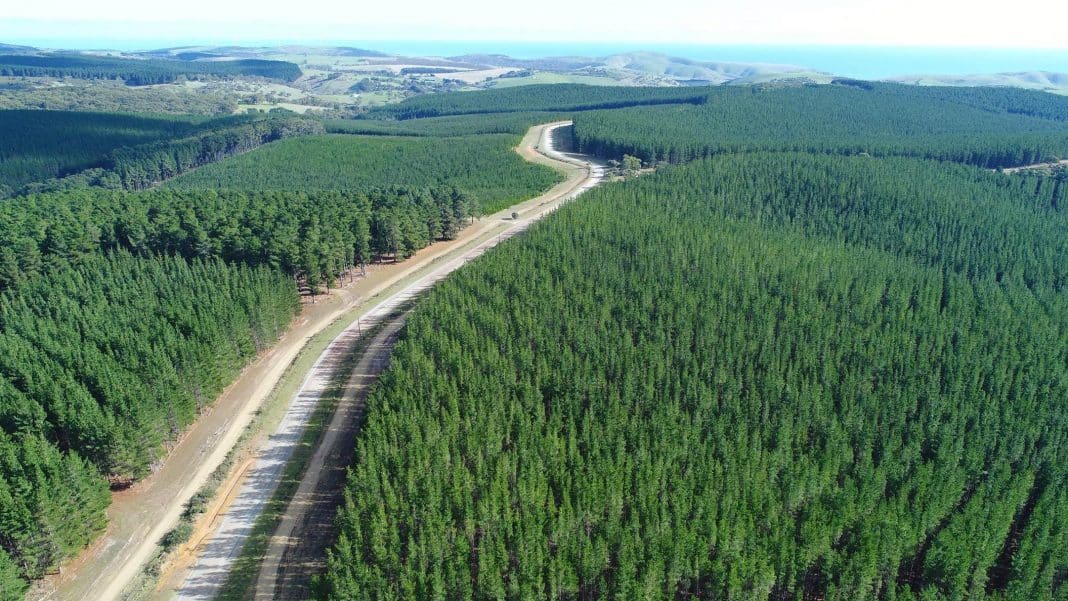There is a level of urgency to stop the decline of the Australian plantation area.
Indeed, we need to increase the scale of productive forests.
ABARES has forecast that by 2050 Australian domestic softwood log demand will outstrip supply by 1.75 million cub m. To address this deficit, ABARES suggests we need to establish more than 200,000 ha of new softwood plantations.
Recently the United Nations released its ‘World Population Prospects 2022’. A key statistic in the report is that global population is now about eight billion – more than three times the population in 1950.
The UN expects we will have 8.5 billion people living on the planet by 2030. As our global population increases, there are increasing demands for wood products. Do you think the sustainable global timber availability has increased at the same levels of rising population? The answer is obvious … a resounding no! In fact, in its recent ‘State of the Forests Report”, the FAO estimates that 420 million ha was deforested in only the last 30 years.
As Australia is a net importer of timber, the future looks bleak.
Our population is currently 25.4 million, an increase of almost 9% since 2016. What has happened to our commercial forests in Australia?
In August 2022, AFPA released a paper stating that Australia’s plantation estate had reduced by 10% over the past six years. Surely that can’t be right? But it is! In its latest plantation area inventory report, ABARES stated that we are currently growing about 1.74 million ha of plantations. This is about 0.25 million ha less than in 2012-13. Some of the losses occurred in the horrendous bushfires in 2019-20, and many of those are being re-established, particularly in eastern states. But some plantations are being reverted back to agricultural production.
In South Australia, some plantations are not permitted to be replanted after harvest because of questionable science about the use of water by trees in areas over shallow aquifers. To make matters worse, our native forests are rapidly being closed to timber production.
Land has become unbelievably expensive in areas where foresters know good plantation growth rates can be achieved. This is mainly because of a booming agricultural sector. The outcome is that rural land prices have jumped by at least 30% and, in some areas, by much more. Such land prices mean that, with current log prices, Net Present Values are sometimes negative. This creates a greater challenge for forestry companies to procure new land for plantations.
What can be done to increase our plantation area? The often-denigrated ‘managed investment scheme’ (MIS) companies were very successful in developing new plantations in Australia in the 1990s and early 2000s. An example of the success is the 100% increase in the plantation area of the Green Triangle during this time.

Such schemes required government support and the federal government in 2005-06 started to resent the level of investment in these projects and challenged their tax deductibility, particularly tax-related incentives.
At the request of the federal government, the ATO challenged the tax deductibility of these investments. It took some two years for the case to get to the High Court where the decision was unanimously found in favour of Timbercorp. These managed investment schemes flourished under a federal Labor government and were terminated under a federal Coalition government. Is it hard to see such support from the current federal government?
If we are serious about increasing the softwood estate by at least 200,000 ha, with the associated benefits of carbon capture, then federal government incentives are needed.
In spite of the plethora of discussion over the last few years about increasing our plantation estate, the area continues to contract.
One area that in the past has produced only modest plantation gains is farm forestry.
As Australia strives to reduce our carbon emissions by 43% in the next eight years, it is clear that carbon sequestration by plantations has a part to play. Farmers are beginning to recognise that forestry integrated onto their properties can be a way in which they can become carbon neutral. The Australian newspaper highlighted this in an October 27 article “’Swapping farmland for forests is a win for all’. We understand the red meat sector aims to be carbon neutral by 2030. These are encouraging signals for new plantation development on farms.
There is more than 380 million ha of productive agricultural land in Australia. An additional 0.2 million ha of plantation has only a negligible, if any, impact on agricultural production.
There has been too much talk and too little action for too long.







